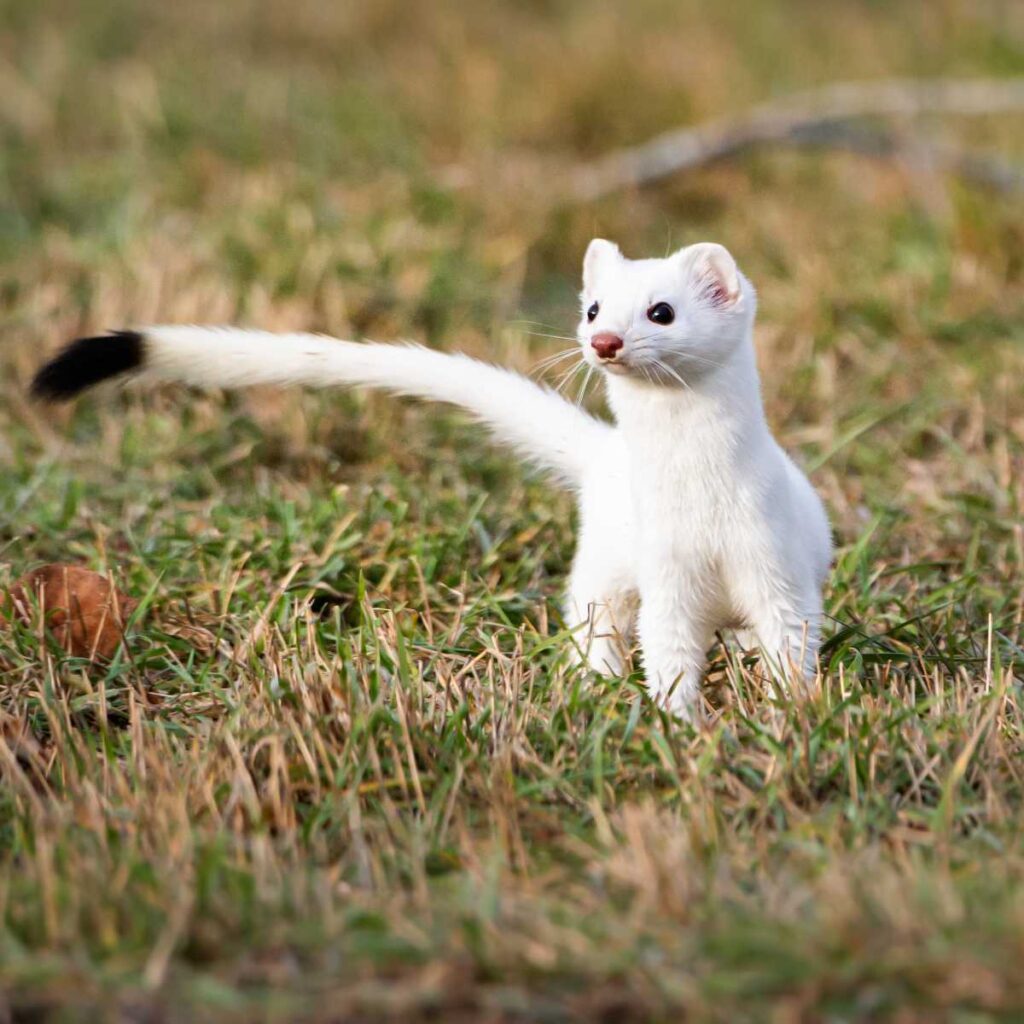Last Reviewed and Updated on February 1, 2023
Ermines are small, weasel-like animals that are native to the northern hemisphere. They might not be one of the world’s most well-known animals, but once you learn more about them, you will see they play a part in our history as well. Read on and explore some fascinating facts about ermines.

About Ermines
Ermines, also known as stoats, are small mammals in the weasel family. While both terms are correct, ermine is more commonly used to describe stoats with white fur.
As of 2021, there are 21 recognized subspecies of stoats.
They are native to North America, Europe, and Asia but have also been introduced to other parts of the world. They have slender bodies, short legs, and long, bushy tails.
Their fur is typically brown in the summer and paler or white in the winter, with a black tip on the tail.
Ermines are carnivorous and eat various small animals, such as rodents, birds, and insects. Mouse-like rodents are their preferred food.
Facts About Ermines
Ready to learn some of the more unique traits of these animals? How are they connected to royalty? Dive deep into some of the most interesting facts about ermines,

Love reading about unique animals? Read through our list of the weirdest facts about animals.
1. In their northern range, their winter coat is snow white
Ermines molt their fur twice a year, in spring and in fall. Differences in color from their summer and winter coat are very apparent in the north, where they have brown coats in summer and white coats (with a black tip on the tail) in winter. In warmer southern habitats, the change in fur color isn’t as dramatic; the coat remains brown all year long but is denser and paler in winter.
2. Females can delay implantation
Ermines undergo embryonic diapause (delayed implantation). This means the embryo does not immediately implant and starts developing after fertilization. It lies dormant for nine to ten months, and the offspring won’t be born until the following spring.
3. Female ermines spend most of their lives pregnant or in heat
Due to them being able to delay implantation and being ready to mate a week after giving birth, females are either pregnant or in the heat for most of their lives.
Fun fact: female kangaroos are also pregnant for most of their adult lives.
4. They can also reabsorb their embryos
In an event where there aren’t enough resources available (extreme winter etc.), females can also reabsorb embryos or even entire litters.
5. Ermines were introduced to New Zealand to control rabbit populations, but…
Ermines were introduced into New Zealand in the 19th century to control the population of rabbits and hares. Rabbits and hares aren’t native to New Zealand either, European settlers brought them as food and game animals, but their population went out of control.
To solve one problem, another was introduced. Even though scientists were against bringing ermines to New Zealand, they were ignored, and ermines were brought in. Ermines quickly became a threat to birds (many of which are ground nesting) and are still a major threat today.
6. Royals wore garments made with their white fur
Their winter pelts were (and sadly still are) amongst the most prized furs. The white fur on the coats of royals was made with ermine fur. Most royal garments these days are made with faux fur instead, but real ermine fur is still commercially used.
7. One of the most famous works of art features an ermine
Leonardo da Vinci’s Lady with an Ermine features an ermine.
8. A male ermine is called a dog, and a female is called a jill
Other names for males ate also a hob and jack. The collective noun for a group of ermines is a gang or a pack.
9. They can tackle prey larger than they are
Stoats regularly pray on larger rodents, even rodents that are larger than they are.
